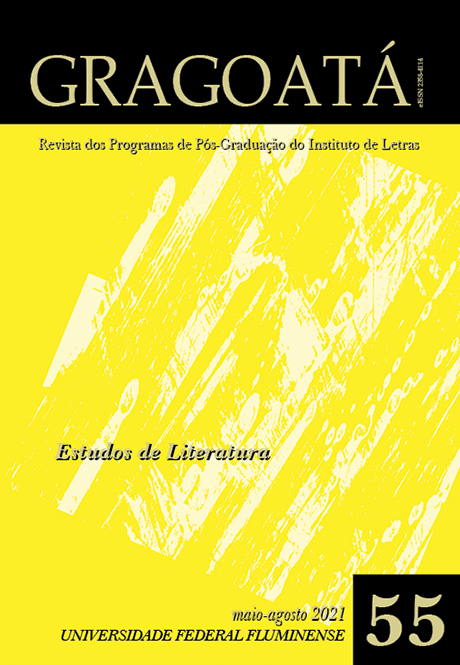Dystopia in the Anthropocene, or Representing/Re-presenting the Interregnum
DOI:
https://doi.org/10.22409/gragoata.v26i55.47745Abstract
Opposing some of the characteristics of solid modernity to those of liquid modernity (BAUMAN, 2001), I examine a body of fictional works, aiming to discuss different dystopian scenarios as representations of the expansion of capitalist mechanisms and their penetration of the social fabric. (JAMESON, 1984) Borrowing from Bauman’s (2012) idea of the interregnum, I argue that, given the deleterious effects brought about by the fragmentation and erosion of the “solid” institutions, coupled with the dissociation between political power – which is being increasingly manipulated by ecologically and socially irresponsible forces – and the pressing issues of humanity and the environment (BROWN, 2015), it has become progressively difficult for “liquid” dystopias to offer a counternarrative to this picture. As a result, contemporary dystopianism tends to represent/re-present the interregnum (BAUMAN, 2012), i.e., the span of time between a social setting that has run its course and another, yet to be defined. Within the scope of fictional dystopias, few authors have taken the risk of outlining a post-capitalist society. Inspired by Negri’s (2005a; 2005b) autonomist vision of the common and the “four futures” imagined b Frase (2016), I propose to discuss Canadian writer Cory Doctorow’s Walkaway (2017), in which the counternarrative or resistance to the hegemonic order is a new form of the organization of work and communication based on equal sharing and the production of common wealth.
Downloads
Downloads
Published
How to Cite
Issue
Section
License
Authors who publish in Gragoatá agree to the following terms:
The authors retain the rights and give the journal the right to the first publication, simultaneously subject to a Creative Commons license CC-BY-NC 4.0, which allows sharing by third parties with due mention to the author and the first publication by Gragoatá.
Authors may enter into additional and separate contractual arrangements for the non-exclusive distribution of the published version of the work (for example, posting it in an institutional repository or publishing it in a book), with recognition of its initial publication in Gragoatá.

Gragoatá is licensed under a Creative Commons - Attribution-NonCommercial 4.0 International.














